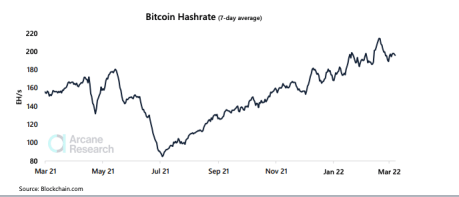Bitcoin Transaction Fees Surge
At the beginning of the month, bitcoin had experienced higher transaction fees. These higher fees were as a result of transaction clustering in the mempool. Once the mempool has filled to a point where there were too many transactions to confirm, fees had invariably gone up given that transactions are confirmed based on the fee they carry. So transactions with higher fees had been confirmed first.Related Reading | Why Is Bitcoin So Volatile, Anyway? Fidelity Digital Assets Explains
BTC recovers above $40K | Source:This volume had packed on the second day, March 2nd, where transactions fees climbed as high as $1.3 million. However, by the third day, miners had been able to clear all of the transactions in the mempool, although at high transaction fees, and the mempool was empty by the third day, March 3rd. Transaction fees had subsequently fallen flowing this clearance.
Miner Revenues Up
Bitcoin transaction fees were not the only that to record a surge as miner revenues had also recorded an uptick. Daily miner revenues for the same time period had also gone up by 6%. However, this was actually due to the price recovery that BTC had seen over the past week as hashrate had fallen once again in the same save-day period.
BTC hashrate falls | Source:As for the transaction fees, even though there had been a significant uptick over this one-week period, fees were still comparatively low. They have been at one of their lowest for the last seven months and the recent surge did not come close to the high points recorded in the history of the digital asset.
Related Reading | Crypto Market Crumbles To Extreme Fear, Is It Time To Buy?
Transactions per day were also up 3.04% from the previous week. Fees per day jumped 99.81% and the average number of transactions was up by 2.54%. Only the number of blocks per hour was down for the time period, falling slightly by 1.67%.Featured image from Investopedia, chart from TradingView.com












